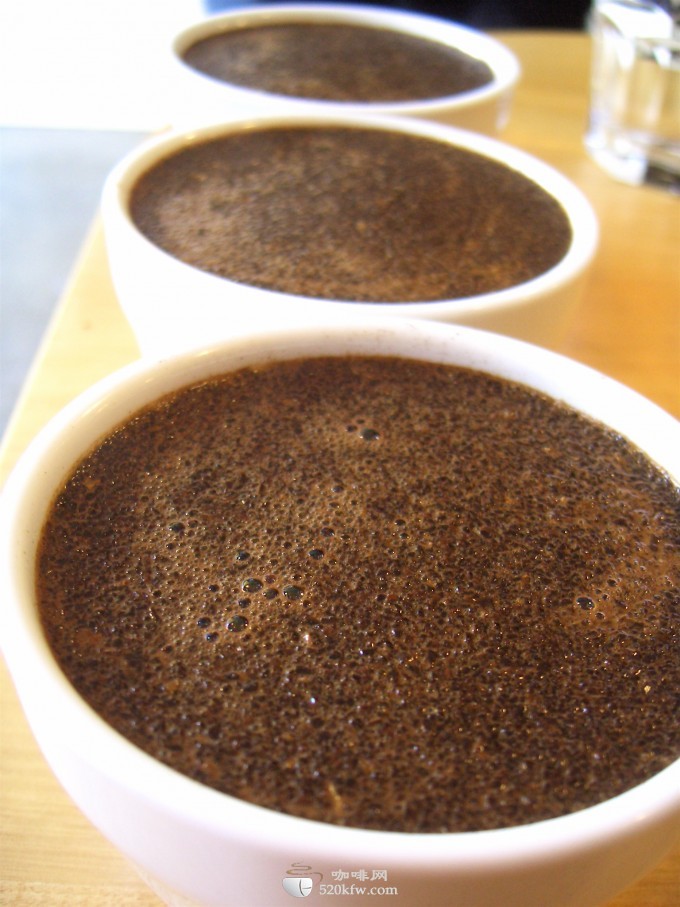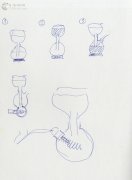Terms for testing professional coffee cups

When testing a cup of coffee, we should distinguish whether the flavor, alcohol thickness, acidity and wet aroma of the coffee are pleasant. Most cup tasters use the following criteria to judge coffee.
Acidity Acidity: acidity is an essential feature of coffee, which is the feeling of dryness that coffee produces on the sublingual edge and the back palate. The effect of coffee acidity is similar to that of red wine, with a strong and exciting texture. Without enough acidity, the coffee tends to be flat. Acidity is different from sour taste, which is an unpleasant and bad taste feature. Acidity
The wet aroma is difficult to separate from the flavor. If there is no sense of smell, our basic sense of taste is only sweet, sour, salty and bitter. The wet aroma enriches the taste discrimination of the soft palate. Some subtle and delicate differences, such as the "floral" or "wine" characteristics, come from the wet aroma of brewed coffee.
Alcohol thickness is the feeling of coffee in the mouth, that is, the feeling of stickiness, thickness and richness produced by coffee acting on the tongue. The difference between drinking whole milk and drinking water is a good example. Our perception of the alcohol thickness of coffee is related to the oil and solids extracted by coffee. The alcohol thickness of Indonesian coffee is significantly higher than that of South and Central American coffee. If you are not sure about the alcohol thickness difference of several types of coffee, try adding the same amount of milk to the coffee. Coffee with high alcohol thickness will retain more flavor when diluted with milk.
Flavor is the overall feeling of coffee in the mouth. Acidity, wet aroma and alcohol thickness are all components of flavor, and it is their balance and homogenization that produce our overall sense of flavor. Here are some typical flavor features:
Rich-refers to the thickness and richness of alcohol; complexity-the feeling of multiple flavors; balance-all basic taste features are satisfactory, and no one taste masks the other.
Fresh, bright, dry, light or lively-(common in Central American coffee): caramel-like sugar or syrup; chocolate-similar to unsweetened chocolate or vanilla aftertaste; delicious-delicate flavor felt on the tip of the tongue (washed New Guinea Arabica beans); earthy-earthy aroma (typical Sumatran coffee) Fragrant-a fragrant trait, ranging from floral to spicy; fruity-an aromatic trait reminiscent of berries or oranges; sweet and mellow-round, smooth, lack of acidity; nutty-similar to the aftertaste of fried nuts; spicy-reminiscent of the flavor and aroma of various spices; sweet-unastringent Wild-a wild flavor that is generally not considered pleasant; common in Ethiopian coffee; alcoholic flavor-an aftertaste reminiscent of fully ripe wine (common in Kenyan and Yemeni coffee).
Undesirable flavor characteristics: bitter-taste from the root of the tongue, mostly caused by overbaking; dull, non-irritating-neutral; charcoal-with charred carbon; inanimate-with "Flat"; miscellaneous-moldy, reminiscent of the taste of eating earth; earthy-with "miscellaneous"; insipid-sour, lack of dampness and aftertaste Grassy-reminiscent of freshly cut grass; rough-a caustic, scratched, rough quality; muddy-sticky but not strong; stiff-starch similar to texture, similar to boiled pasta water; rough-the feeling on the tongue, similar to eating salt Rubber smell-similar to burnt rubber smell (commonly found in dry processed Robusta beans); soft-same as "boring, non-irritating"; sour-similar to the acidity of unripe fruit; thin-acidity-free, usually caused by inadequate extraction; turpentine-tasting like turpentine; water-lacking alcohol thickness and no stickiness in the mouth Rough-wild quality.
Important Notice :
前街咖啡 FrontStreet Coffee has moved to new addredd:
FrontStreet Coffee Address: 315,Donghua East Road,GuangZhou
Tel:020 38364473
- Prev

About the taste of world classic coffee
Mamba coffee Mandeling Brazilian Coffee Manning with Brazil, fragrant and delicious, strong and delicious, is the perfect carbon roasted coffee in coffee Charcoal Roasted Coffee slow-roasted coffee, more rich, glycolic Brazilian coffee Brazilian Coffee neutral coffee, aromatic Yigou mocha coffee Mocha Coffee Origin: Ethiopia
- Next

Creative coffee utensils
This coffee machine was designed by Portuguese designer Davide Mateus. From this process, we can see how a simple coffee machine is realized, just like the journey of life. Maybe it's just a simple sentence. It doesn't care about the ambition of the goal. What matters is how you achieve it in the process.
Related
- What documents do you need to go through to open a coffee shop? coffee shop coffee shop certificate processing process
- How to purchase Coffee beans in small Cafe how to choose a suitable supplier for domestic Coffee supply Company
- How to drink Starbucks Fragrance White Coffee? how to make Australian White Coffee? what Italian coffee beans are recommended?
- The Story of Flora Coffee: the name of Flora Coffee Bean and the implication of the Flowers on Florna Coffee
- How much does a cup of coffee cost? How much is the profit of a cup of coffee? What is the profit of the coffee shop in a year?
- Yunnan small Coffee, known as "fragrant Coffee", introduces the characteristics of Alpine Arabica Coffee producing areas in Yunnan, China
- 2023 latest Starbucks full menu price list how much is a cup of Starbucks coffee what is better to drink the most popular hot and cold drinks recommended
- Starbucks different kinds of Coffee Price list Starbucks menu 2023 Top Ten Best drinks in Starbucks
- Starbucks Spring praise Comprehensive matching Coffee Bean theme Story Packaging implication and taste description
- The cost of a cup of coffee latte American coffee cost price and selling price

